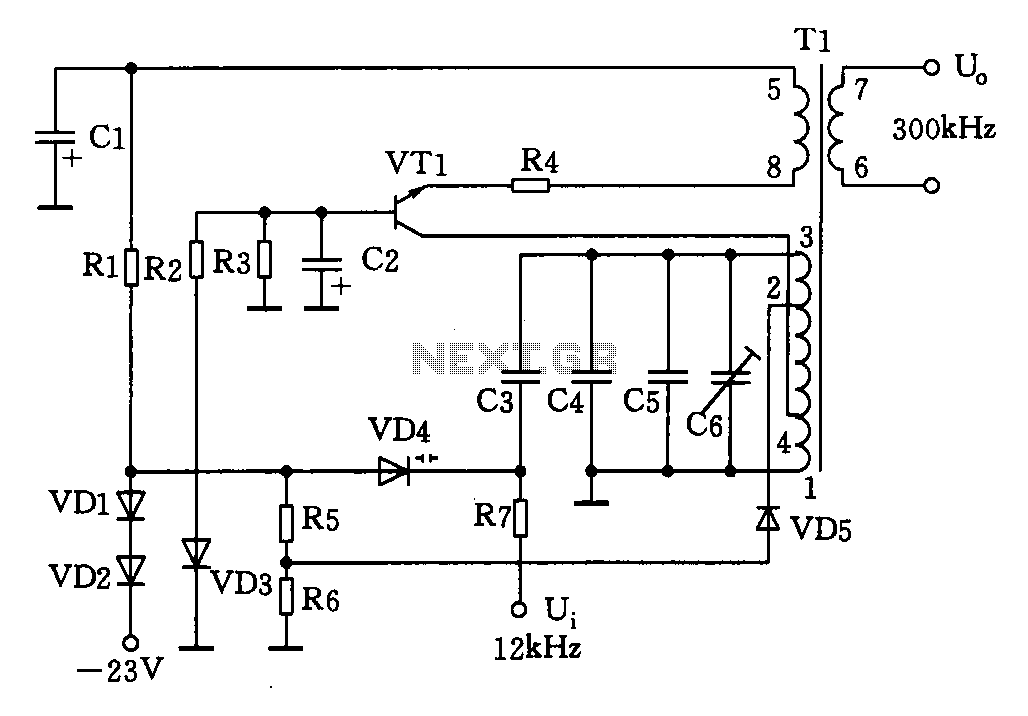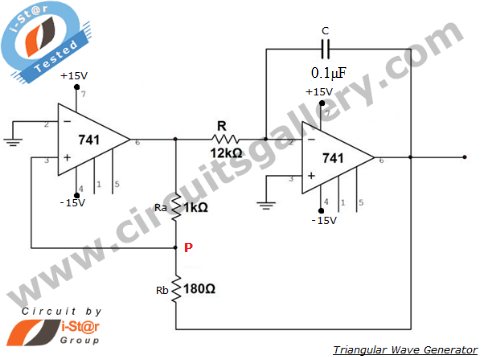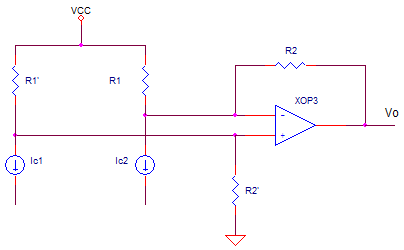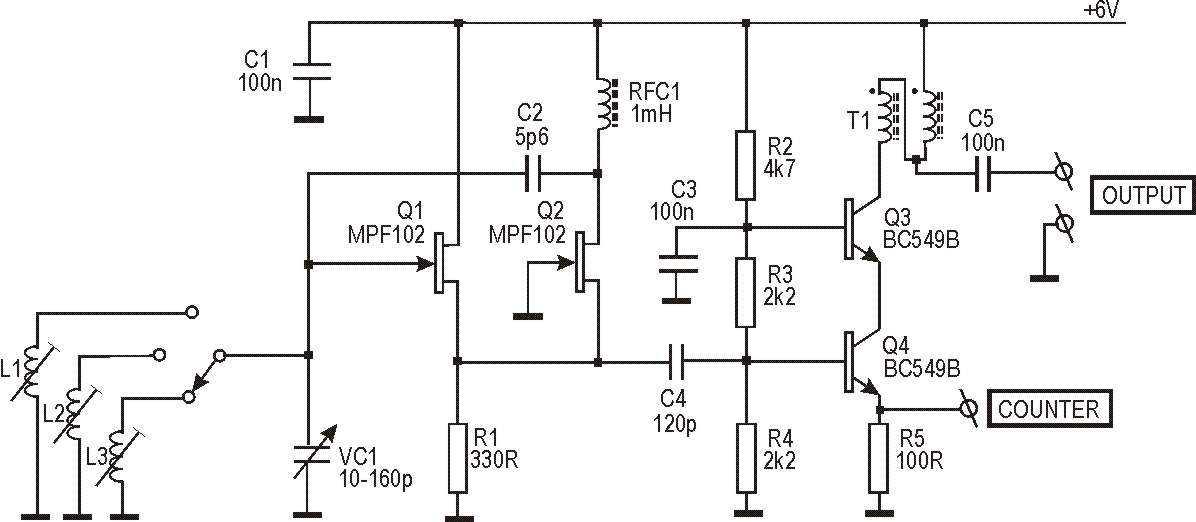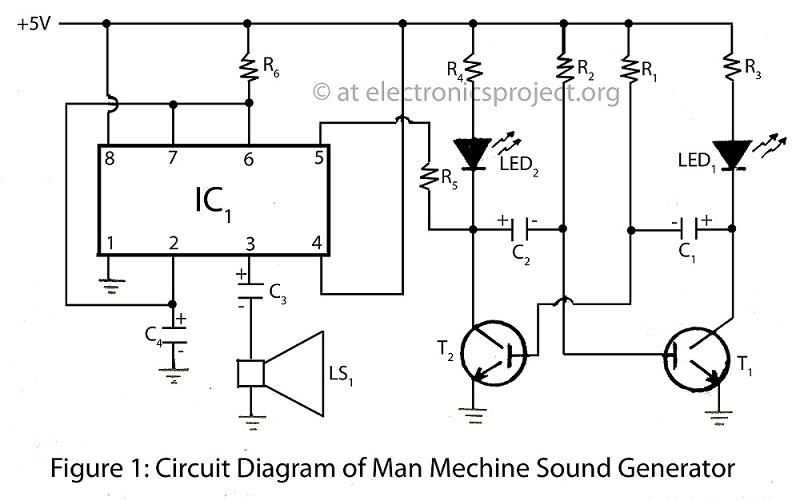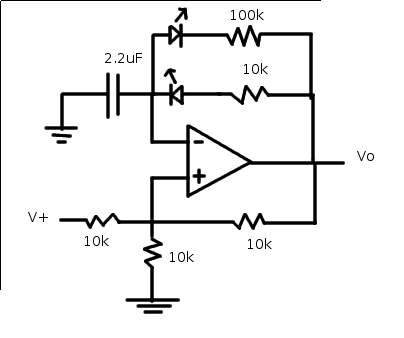
marker generator
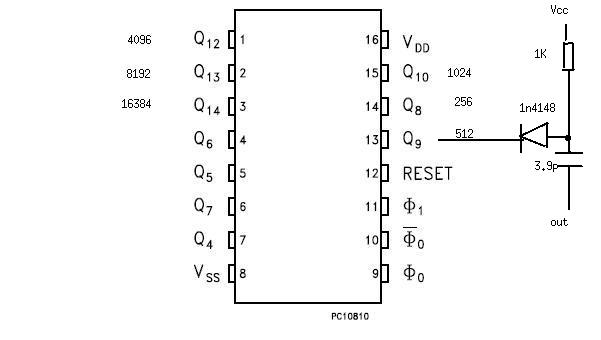
A resistor of 100K Ohm is connected between pin 10 and pin 11, while another resistor of 2K Ohm is present in the circuit. The fixed capacitor was determined through trial and error to achieve resonance with the crystal at approximately 39pF, while the variable capacitor is slightly larger at 39pF plus an additional 20pF, as referenced in the 4060 datasheet. The output circuit shown in the accompanying image has not been tested; only standard capacitive coupling has been verified. However, it is anticipated that the circuit will produce pronounced peaks as the diode will conduct briefly during the falling edge of the square wave. This configuration is expected to generate numerous 10kHz harmonics in addition to the fundamental square wave frequency. Verification with an oscilloscope is planned for a future date.
The circuit described involves a fundamental oscillator configuration utilizing a 4060 integrated circuit, which is known for its frequency division capabilities and oscillator functionality. The inclusion of a 100K Ohm resistor between pins 10 and 11 plays a crucial role in setting the timing characteristics of the oscillator, influencing the frequency stability and output waveform shape. The second resistor of 2K Ohm may be part of a feedback or biasing network, ensuring proper operation of the oscillator.
The capacitor values specified are critical for tuning the oscillator to the desired frequency. The fixed capacitor, approximately 39pF, and the variable capacitor, which can be adjusted between 39pF and 59pF, allow for fine-tuning of the oscillator's frequency. This tuning is essential for achieving the precise frequency required for the application, as indicated by the 4060 datasheet.
The output stage of the circuit, while not tested, is expected to exhibit interesting characteristics due to the diode's rapid conduction during the square wave's falling edge. This behavior may lead to the generation of harmonics, particularly at 10kHz, which are typically associated with non-linear switching elements in a circuit. The expectation of pronounced peaks in the output waveform suggests that the circuit may be designed for applications requiring sharp transitions and fast rise and fall times, which are beneficial in digital signal processing and pulse generation.
The planned verification with an oscilloscope will provide essential insights into the actual performance of the circuit, allowing for the observation of the output waveform and the presence of harmonics, thus confirming the theoretical expectations outlined in the circuit design.Resistor between pin 10 and 11 is a 100K Ohm one, the other a 2K. Fixed capacitor was by trial and error, to get crystal on the exact frequency, somewhere near 39pF and the variable one a little more: 39+20var, see 4060 datasheet. The output circuit on the above image wasn`t tested (just normal cap coupling was) but I`m sure it will give nice peaks because diode will conduct very shortly on the down flank of the square wave,
generating lot`s of 10Khz harmonics and more than the simple square wave. I need a scope to verify that. maybe next year. 🔗 External reference
The circuit described involves a fundamental oscillator configuration utilizing a 4060 integrated circuit, which is known for its frequency division capabilities and oscillator functionality. The inclusion of a 100K Ohm resistor between pins 10 and 11 plays a crucial role in setting the timing characteristics of the oscillator, influencing the frequency stability and output waveform shape. The second resistor of 2K Ohm may be part of a feedback or biasing network, ensuring proper operation of the oscillator.
The capacitor values specified are critical for tuning the oscillator to the desired frequency. The fixed capacitor, approximately 39pF, and the variable capacitor, which can be adjusted between 39pF and 59pF, allow for fine-tuning of the oscillator's frequency. This tuning is essential for achieving the precise frequency required for the application, as indicated by the 4060 datasheet.
The output stage of the circuit, while not tested, is expected to exhibit interesting characteristics due to the diode's rapid conduction during the square wave's falling edge. This behavior may lead to the generation of harmonics, particularly at 10kHz, which are typically associated with non-linear switching elements in a circuit. The expectation of pronounced peaks in the output waveform suggests that the circuit may be designed for applications requiring sharp transitions and fast rise and fall times, which are beneficial in digital signal processing and pulse generation.
The planned verification with an oscilloscope will provide essential insights into the actual performance of the circuit, allowing for the observation of the output waveform and the presence of harmonics, thus confirming the theoretical expectations outlined in the circuit design.Resistor between pin 10 and 11 is a 100K Ohm one, the other a 2K. Fixed capacitor was by trial and error, to get crystal on the exact frequency, somewhere near 39pF and the variable one a little more: 39+20var, see 4060 datasheet. The output circuit on the above image wasn`t tested (just normal cap coupling was) but I`m sure it will give nice peaks because diode will conduct very shortly on the down flank of the square wave,
generating lot`s of 10Khz harmonics and more than the simple square wave. I need a scope to verify that. maybe next year. 🔗 External reference
